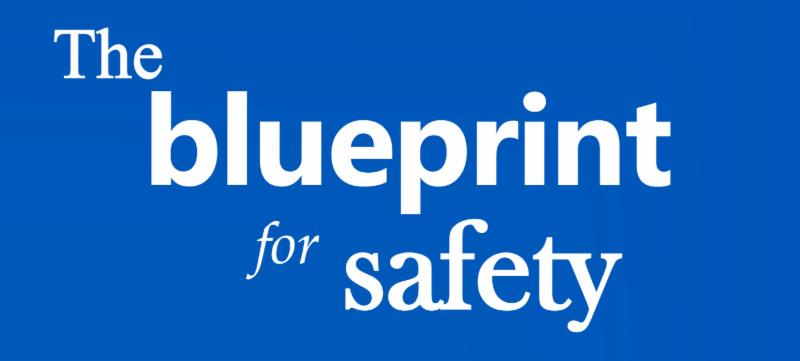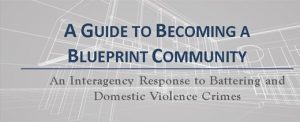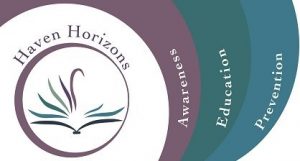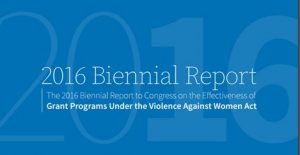
E-Newsletter on Reforming Criminal Justices Responses to Battering
Praxis provides training and consultation for criminal legal system practitioners and community-based advocates to adapt, implement, and monitor the Blueprint for Safety (Blueprint) in their communities. This e-newsletter features information about the foundations of the Blueprint model, what’s happening in Blueprint communities, and information about how Blueprint communities have uncovered disparity of impact, along with tools and upcoming training events. We hope it helps you to succeed in your system reform efforts!
Becoming a Blueprint Community
Community Spotlight
Tools for System Reform
Training and Technical Assistance for Becoming a Blueprint Community
Blueprint in the News
Blueprint Communities
Contact Us
 Becoming a Blueprint Community
Becoming a Blueprint Community
Taking Your Coordinated Community Response (CCR) to the Next Level
As the first comprehensive, written interagency plan for criminal legal system response to domestic violence crimes in the nation, the Blueprint for Safety is a fully formed and actualized coordinated community response (CCR). Building on the groundbreaking work of two Minnesota communities, Duluth and St. Paul, the Blueprint codifies an ongoing process of adaptation, implementation, and monitoring. It organizes case processing around: 1) what victims need to be safe; 2) what practitioners need from each other to do their jobs and enhance safety; and 3) what each worker and agency is required to do to hold offenders accountable.
The Blueprint provides direction for each worker on how to identify, document, act upon, and communicate information about risk and danger. It provides direction on how to engage in partnership with victims to promote safety, and requires adjusting interventions to avoid and correct unintended harmful consequences and disparity of impact. The overall design and function of the Blueprint rests on several core features:
![]() A functioning interagency group, such as a CCR Team
A functioning interagency group, such as a CCR Team
The Blueprint requires leadership of an interagency group with representation from the key criminal legal system agencies (911, police, pre-trial, jail, prosecution, courts, and probation) and significant participation and leadership from community advocates. The interagency group meets periodically to address aspects of the community response, i.e., case review, policy development, gaps in case processing, and training needs.
![]() A commitment to six Blueprint Foundational Principles:
A commitment to six Blueprint Foundational Principles:
- Adhere to an interagency approach to domestic violence
- Adjust the response based on the context and severity of what is occurring
- Recognize that domestic violence is a patterned crime requiring continuing engagement with victims and perpetrators
- Ensure swift and sure consequences for continued abuse
- Send messages of help and accountability to victims and perpetrators
- Reduce unintended consequences and disparity of impact of intervention
![]() A commitment to centralize the experiences of victims of domestic violence and an understanding of how the intervention of the criminal legal system affects their lives
A commitment to centralize the experiences of victims of domestic violence and an understanding of how the intervention of the criminal legal system affects their lives
The Blueprint features the leadership of community-based advocates and prioritizes their involvement in every phase of Blueprint adaptation, implementation, and ongoing monitoring. Community-based advocacy provides a setting where victims of battering can speak confidentially and openly—including those who are fearful of and try to avoid the criminal legal system. Advocates then represent the voices of victims, bringing their experiences and concerns to the interagency team.
![]() Agreement to use the Blueprint templates to revise, adapt, or develop policies, protocols, and other documents to guide the work of agencies and practitioners.
Agreement to use the Blueprint templates to revise, adapt, or develop policies, protocols, and other documents to guide the work of agencies and practitioners.
The Blueprint includes a template for each agency (policies, protocols, and supplemental materials) that spells out what each worker is required to do. Each agency adapts its template and incorporates the Blueprint as the agency’s internal domestic violence policy and protocol.
![]() Agreement to engage in an ongoing process of guiding and supervising practitioners to ensure that Blueprint practices are being implemented
Agreement to engage in an ongoing process of guiding and supervising practitioners to ensure that Blueprint practices are being implemented
The Blueprint provides direction to supervisors for regular case review (e.g., listening to 911 calls, reviewing reports, observing on-scene or in the courtroom, case tracking) to identify problems in how Blueprint policy and practice is applied. Agency practitioners receive timely guidance to reinforce Blueprint practices and correct any problems in implementation.
![]() Commitment to review and monitor the work of each agency
Commitment to review and monitor the work of each agency
As a collective policy, the Blueprint unites each agency-specific policy and protocol with a shared purpose that reflects the Blueprint foundational principles. Interagency monitoring seeks to determine how that collective policy is working by examining (a) whether workers are doing what is intended, (b) the results of implementation as reflected in statistical data, and (c) the impact of changes on the experiences of victims of domestic violence.
 Community Spotlight
Community Spotlight
Northwest Hennepin County, Minnesota – Blueprint Expansion in MN
Led by the local advocacy program, Home Free Community Programs, the City of Plymouth in Northwest Hennepin County, MN, has been working hard to adapt their Blueprint for Safety. Beginning with a private grant and supplemented by a STOP grant, the City and Home Free have been transforming their law enforcement and prosecution response to domestic violence. The Plymouth Police Department adopted new policies in April 2017, and trained every officer, and the City Attorney’s office has developed a Blueprint policy. Neighboring cities of New Hope and Champlin are now following suit.
A key project challenge is that some criminal justice agencies are located within the county and not under Plymouth city control; the city does not have its own emergency call center, probation office or judge. Home Free is therefore working closely with other criminal justice agencies and advocacy programs in Western Hennepin County to align those local responses to Plymouth’s developing Blueprint to the greatest extent possible.
Elsa Swenson, Home Free Community Program Manager, says that implementation of the Blueprint risk questions has been a “game-changer” in their local response, enabling officers to see a clearer picture of what is happening in the home, and helping to build partnerships between officers and victims.
With the Blueprint as a guide, regular interagency meetings have become more productive and are now geared toward problem solving vs. reports and updates. 
The Plymouth Police Department and prosecutor’s office did not wait until the end of a long process to adapt policy and practice. Andrea Marboe, Blueprint Coordinator, reports that as survivor focus groups and interviews revealed gaps in the response, Plymouth was willing to institute some Blueprint policy changes immediately, such as implementing the Blueprint risk questions.
 Tools for System Reform
Tools for System Reform
The Adaptable Blueprint for Safety:
Policy and Protocol Templates
The Blueprint for Safety: An Interagency Response to Domestic Violence Crimes reflects the culmination of over thirty years of criminal legal system reform, the results of local Safety and Accountability Audits, and a review of recent research. The Blueprint provides a detailed set of templates for writing policies and protocols that are consistent with the collective policy for intervention that is fundamental to the Blueprint for Safety. These templates can be adopted as written, or Blueprint communities can modify them to comply with state law and local conditions.
The templates for each of seven criminal justice agencies have four parts:
- An introductory section providing the framework for each stage of intervention,
- A brief set of policies,
- Detailed protocols; and,
- Accompanying training memoranda.
The Blueprint template was designed so that a CCR may adopt a comprehensive body of best practices from the beginning to the end of a domestic violence case, already written, in tandem with a process for adjusting the model to fit the community.
Even a cursory examination of the Blueprint protocols reveals a significant amount of detail, with each step taken by each practitioner itemized with meticulous and all-encompassing, leave-no-stone-unturned language. The Blueprint framers carefully collected and researched best practices across the country to formulate the Blueprint policies and protocols. Every policy and protocol is written to ensure that workers will have access to the most comprehensive and up-to-date information to guide their response. Communities seeking to maximize their response to crimes of domestic violence no longer need to search separately for best practices in their various agencies; they are all contained in one source—the Blueprint.
This level of detail is important. It fleshes out everything a worker needs to know to effectively do their part in a domestic violence case. Nothing is left to chance or supposition. The protocols also serve as a reminder of the serious nature of this offense and as a counterbalance to the long history of neglect these cases have had. The Blueprint protocols remind workers every step of the way to be conscientious, comprehensive and meticulous in their work. The protocols also provide a solid guide for training of new workers, and a standard for supervision within each agency.
Lessons learned from the St. Paul Blueprint and the Office on Violence Against Women Blueprint Demonstration Initiative indicate that CCRs are most successful in utilizing the Blueprint template as a tool for policy and protocol development when following these steps:
![]() Form a small workgroup of one or two practitioners from each agency, assigned to work with the Blueprint Coordinator on drafting the agency’s policy and protocol document.
Form a small workgroup of one or two practitioners from each agency, assigned to work with the Blueprint Coordinator on drafting the agency’s policy and protocol document.
![]() Compare local policy and practice to the Blueprint policy template.*
Compare local policy and practice to the Blueprint policy template.*
![]() Draft a policy adaptation for team or agency head review.
Draft a policy adaptation for team or agency head review.
![]() Incorporate feedback from partners and agency heads, finalizing policy agreements.
Incorporate feedback from partners and agency heads, finalizing policy agreements.
![]() Repeat the above steps with the Blueprint protocol templates.
Repeat the above steps with the Blueprint protocol templates.
(*Email info@praxisinternational.org for editable comparison charts)
 Becoming a Blueprint Community
Becoming a Blueprint Community

The Blueprint Guide is a step-by-step resource to becoming a Blueprint for Safety community. Starting with a readiness assessment, the Guide lays out the phases, processes, and key people needed to successfully adapt, implement, and monitor a Blueprint response. Explore the Blueprint Guide Appendices for a comprehensive set of tools and guides for enhancing your community’s response to domestic violence, including policy development charts that a work group could use as work sheets in its policy development work.
Praxis also provides training and technical assistance for communities interested in a Blueprint for Safety that includes exercises during which a work group practices reviewing and discussing current policy, and comparing current policy to the Blueprint’s essential elements. Praxis can also provide examples of policy development from other Blueprint communities.
 Blueprint in the News
Blueprint in the News
 Blueprint Communities
Blueprint Communities
| St. Paul, MN | Rice County, MN |
| Duluth, MN | Albemarle County, VA |
| New Orleans, LA | Marin County, CA |
| Shelby County, TN | Blue Earth County, MN |
| Marquette County, MI | Winona, MN |
| Midland County, MI | Plymouth, MN |
| Richmond, KY |
We are always interested in learning about communities around the country that are implementing Blueprints. Please contact info@praxisinternational.org if you do not see your community listed here. Contact us for help or more information on the Blueprint.
 Contact us for help or more information on the Blueprint
Contact us for help or more information on the Blueprint
Winter 2017
This project was supported by Grant No. 2015-TA-AX-K032 awarded by the Office on Violence Against Women, U.S. Department of Justice. The opinions, findings, conclusions and recommendations expressed here are those of the author(s) and do not necessarily reflect the views of the U.S. Department of Justice.






